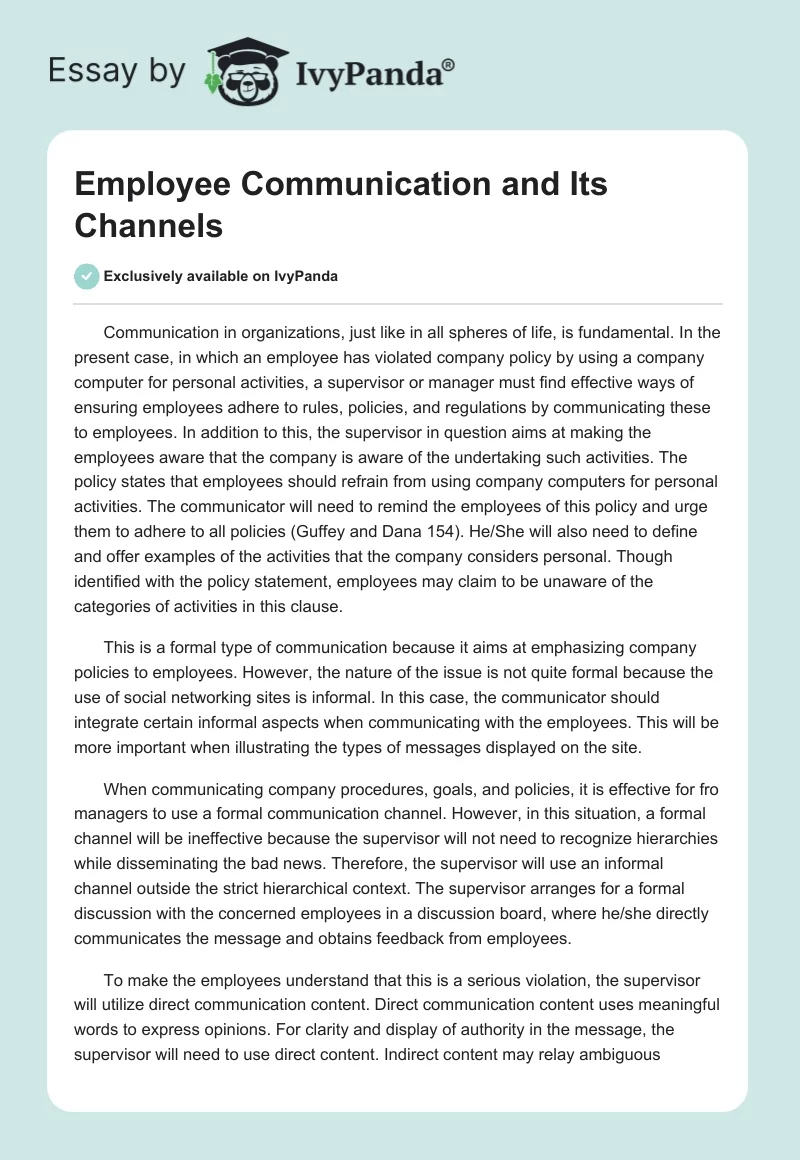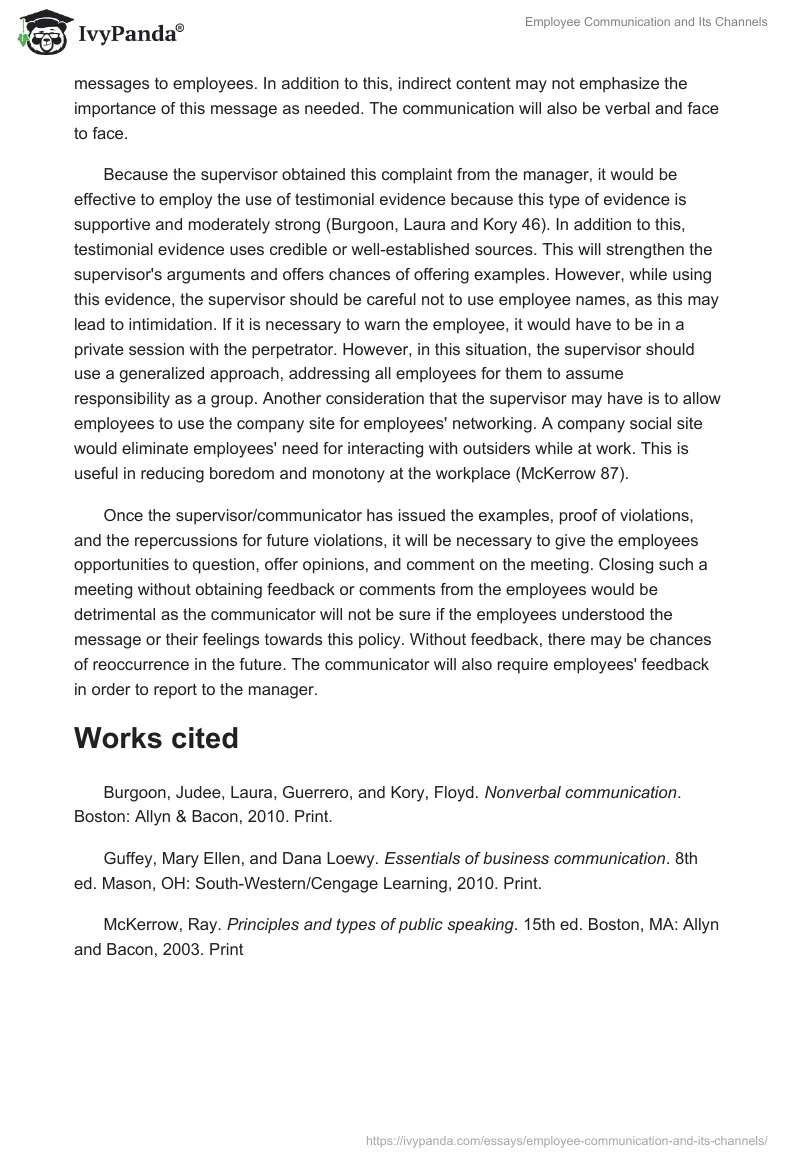Communication in organizations, just like in all spheres of life, is fundamental. In the present case, in which an employee has violated company policy by using a company computer for personal activities, a supervisor or manager must find effective ways of ensuring employees adhere to rules, policies, and regulations by communicating these to employees. In addition to this, the supervisor in question aims at making the employees aware that the company is aware of the undertaking such activities. The policy states that employees should refrain from using company computers for personal activities. The communicator will need to remind the employees of this policy and urge them to adhere to all policies (Guffey and Dana 154). He/She will also need to define and offer examples of the activities that the company considers personal. Though identified with the policy statement, employees may claim to be unaware of the categories of activities in this clause.
This is a formal type of communication because it aims at emphasizing company policies to employees. However, the nature of the issue is not quite formal because the use of social networking sites is informal. In this case, the communicator should integrate certain informal aspects when communicating with the employees. This will be more important when illustrating the types of messages displayed on the site.
When communicating company procedures, goals, and policies, it is effective for fro managers to use a formal communication channel. However, in this situation, a formal channel will be ineffective because the supervisor will not need to recognize hierarchies while disseminating the bad news. Therefore, the supervisor will use an informal channel outside the strict hierarchical context. The supervisor arranges for a formal discussion with the concerned employees in a discussion board, where he/she directly communicates the message and obtains feedback from employees.
To make the employees understand that this is a serious violation, the supervisor will utilize direct communication content. Direct communication content uses meaningful words to express opinions. For clarity and display of authority in the message, the supervisor will need to use direct content. Indirect content may relay ambiguous messages to employees. In addition to this, indirect content may not emphasize the importance of this message as needed. The communication will also be verbal and face to face.
Because the supervisor obtained this complaint from the manager, it would be effective to employ the use of testimonial evidence because this type of evidence is supportive and moderately strong (Burgoon, Laura and Kory 46). In addition to this, testimonial evidence uses credible or well-established sources. This will strengthen the supervisor’s arguments and offers chances of offering examples. However, while using this evidence, the supervisor should be careful not to use employee names, as this may lead to intimidation. If it is necessary to warn the employee, it would have to be in a private session with the perpetrator. However, in this situation, the supervisor should use a generalized approach, addressing all employees for them to assume responsibility as a group. Another consideration that the supervisor may have is to allow employees to use the company site for employees’ networking. A company social site would eliminate employees’ need for interacting with outsiders while at work. This is useful in reducing boredom and monotony at the workplace (McKerrow 87).
Once the supervisor/communicator has issued the examples, proof of violations, and the repercussions for future violations, it will be necessary to give the employees opportunities to question, offer opinions, and comment on the meeting. Closing such a meeting without obtaining feedback or comments from the employees would be detrimental as the communicator will not be sure if the employees understood the message or their feelings towards this policy. Without feedback, there may be chances of reoccurrence in the future. The communicator will also require employees’ feedback in order to report to the manager.
Works cited
Burgoon, Judee, Laura, Guerrero, and Kory, Floyd. Nonverbal communication. Boston: Allyn & Bacon, 2010. Print.
Guffey, Mary Ellen, and Dana Loewy. Essentials of business communication. 8th ed. Mason, OH: South-Western/Cengage Learning, 2010. Print.
McKerrow, Ray. Principles and types of public speaking. 15th ed. Boston, MA: Allyn and Bacon, 2003. Print


